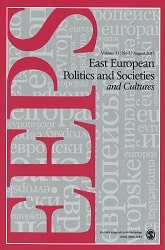
Homeland and National Identity in Southeastern Europe
The review of: George W. White. Nationalism and Territory: Constructing Group Identity in Southeastern Europe. Lanham, Md.: Rowman and Littlefield, 2000. 328 pp.
More...We kindly inform you that, as long as the subject affiliation of our 300.000+ articles is in progress, you might get unsufficient or no results on your third level or second level search. In this case, please broaden your search criteria.

The review of: George W. White. Nationalism and Territory: Constructing Group Identity in Southeastern Europe. Lanham, Md.: Rowman and Littlefield, 2000. 328 pp.
More...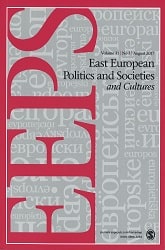
The contemporary Balkan crisis entails the consequential dimension of interaction between mainstream religion and Yugoslav ethnonational politics. Several studies that examined this aspect of the Yugoslav case, provided valuable information and important insights but hesitated to designate the mainstream Yugoslav religious institutions as agents of landmark mass movements. According to mainstream scholarship, religious organizations ordinarily operated as assistants to nationalist movements and populist regimes of late and postcommunism spearheaded by secular forces. [...]
More...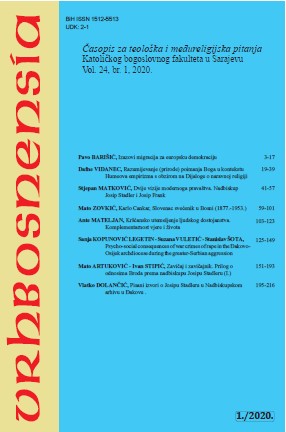
The issue of migration has become a paramount political concern. In this context, one can look at the emerging challenges that liberal democracy faces today, especially in Europe. Similar cases of democratic turbulence can be observed in America. Non-democratic countries are in a different situation. They do not have to deal with resistance from public opinion in the same way. Migrations, therefore, impose new realignments in democratic politics and obscure some older political divisions and tensions. This article examines the key political paradigm shifts that drive and open up migration to democratically organized societies in Europe. It starts with the fact that Europe has become the largest refuge for migrants in the world. With migrants comprising 10.4% of its population, the proportion of migrants in Europe is three times higher than the world average of 3.5%. From 1990 to 2017 the figure increased from 6.8% to 10.4%. Every third migrant in the world lives in Europe. The impact of globalization on increasing economic migration is also presented. Since 2010, politics in Europe has abandoned the desirable model of multiculturalism and turned to the concept of inter-culturalism. In this short span of time, political parties that use anti-immigrant views have taken off. The article draws particular attention to the situation in the United Kingdom, France, Germany, Italy, the Netherlands and Northern, Central and Eastern Europe. The message from citizens is that migration is a serious and highly inflammatory political issue and that anti-immigrant sentiment in European societies has become politically radicalized. Political forces that advocate for more radical solutions have stepped into this space and exploited it. The ‘mainstream’ parties no longer underestimate or ignore the issue of illegal migration. It is increasingly entering the compulsory corpus of their programs.
More...
This is the first part of a paper that contributes to knowledge about the relationship between Brod and the people of Brod and Archbishop Josip Stadler. Through his example it is possible to acquire a clear view of how politics dictates and forms the consciousness of citizens towards their fellow citizens, even those whom may be ranked among the most prominent. The political struggle at the national level was also reflected at the local level. Stadler was a great opponent of the Yugoslav option and the entry into a joint state with Serbia. His political option was Western, “trialistic” with a reliance on the Austro-Hungarian Monarchy; in social matters his option was Christian-social with a distinct feeling for the poorest citizens, regardless of religious affiliation. “Materinska riječ- The mother tongue” as the newspaper of the Croatian-Serbian coalition (whose leader was Dr. Vatroslav Brlić) and “Posavska Hrvatska-Posavina Croatia” as the rightwing newspaper of Frank’s side, are two papers that take a completely opposite position towards Stadler. For the Materinska riječ, Stadler is a “dangerous man” because of his opposition to their political program of “one nation with two names” and a common state with Serbia. As most of the newspapers published in Brod between the two wars represented Yugoslav ideology, Stadler was rarely mentioned and practically forgotten in them. His values for Croatian people were temporarily recognized during the Independent State of Croatia. After the advent of the communist dictatorship, primarily in the newspaper Brodski list, he was not even mentioned. With the collapse of the dictatorship, Brod and the people of Brod got to know their great fellow citizen. The biggest credit for this goes first of all to the Sisters of the Servant of the Infant Jesus, a religious community founded by Archbishop Stadler.
More...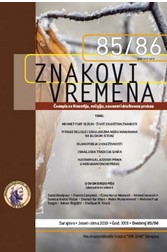
Poštovane dame i gospodo, zadovoljstvo je pridružiti vam se ovo popodne na godišnjoj NATO konferenciji vjerskih lidera u vojsci. Ovo popodne zamoljen sam da govorim na temu “Pitanje religije i sekularizma među manjinama na Bliskom Istoku”. Započet ću tako što ću priznati da sam u početku bio više fokusiran na teorijski dio, ali sa brzo razvijajućim događajima u 2017. godini, odlučio sam da govorim o političkom aspektu i da dam presjek teških stvari koje su goruća tema koje će vjerovatno postati još većom temom u danima koji dolaze, a to je “Šta učiniti sa Bliskim Istokom i, posebno, šta uraditi sa stanjem vjerskih manjina?”. Čini se da se ovo pitanje sada postavlja pred nas i u središte vanjskih i odbrambenih političkih razmatranja. Predsjednik Trump potpisao je tri naredbe izvršnog karaktera prošle sedmice i jedna od njih zabranjuje građanima, dominantno muslimanskih država, ulazak u Sjedinjene Države za najmanje 90 dana. Za kršćane iz ovih država napravio je izuzetak, a američkoj vojsci dao je zadatak da iznađu strategiju za 30 dana kako da poraze ISIL.
More...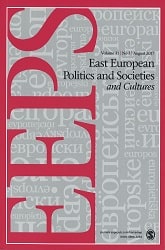
The review of: 1) Jaromír Navrátil et al. eds. The Prague Spring 1968: A National Security Archive Documents Reader. Translated by Mark Kramer, Joy Moss, and Ruth Tosek. Budapest: Central European University Press, 1998. xxxix, 596 pp. 2) Miklós Kun. Prague Spring-Prague Fall: Blank Spots of 1968. Translated by Hajnal Csatorday. Budapest: Akadémiai Kiadó, 1999. xiii, 252 pp.
More...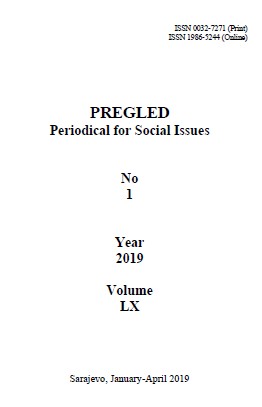
Since the beginning of the establishment of the Austro-Hungarian rule in Bosnia and Herzegovina, Bosniak people had a suspicion and developed distrust which derived from the occupation. The emigration of Bosniaks started due to the cruel rule, especially during the first military administration, to Rumelia, Anatolia and theArab countries of the Ottoman Empire. The moderate policies of the Austro-Hungarian Empire towards Bosniaks resulted in the calmer situation in the country. However, several deeper internal political crises ended with the annexation as an international crisis and triggered major waves of displacement of Bosniaks in the Ottoman Empire. They migrated because of the Muslim obligation of the hidzra (hiğrä) which meant an eviction for religious reasons. Bosniaks believed that they could not live as Muslims under the Christian occupational power. They didn't follow instructions (fètva), messages (risála) or the appeals of Muslim religious authorities that they do not need to obtain hidzra. However, the organized activities of Bosniaks, Muslims and religious scholars (ulema) affected the reduction of the number of Bosniaks interested in moving to the Ottoman Empire. On another side, some Bosniaks had more practical reasons to move out - a hope for a better life and plans for a new beginning.
More...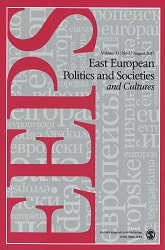
Wars everywhere have always played a major role in historical memory. "Even the oldest myths and traditions deal with fighting and killing," the German novelist Hans-Magnus Enzenberger said recently, recalling this simple but no less basic historical fact. While collective memory in premodern societies was largely based on wartime experiences, the advent of nationalism in the late eighteenth century increased the importance, the political role, and the cultural significance of war memories in societies everywhere, not only in the Balkans. War memorials, celebrations, cemeteries, and other symbolic, expressions of memory were not only "sites of mourning," but, more important, they became the means of fostering a collective national identity; education, textbooks, and public discourse all combined to remind people of the duty of sacrificing for one's own nation by recalling former wars. [...]
More...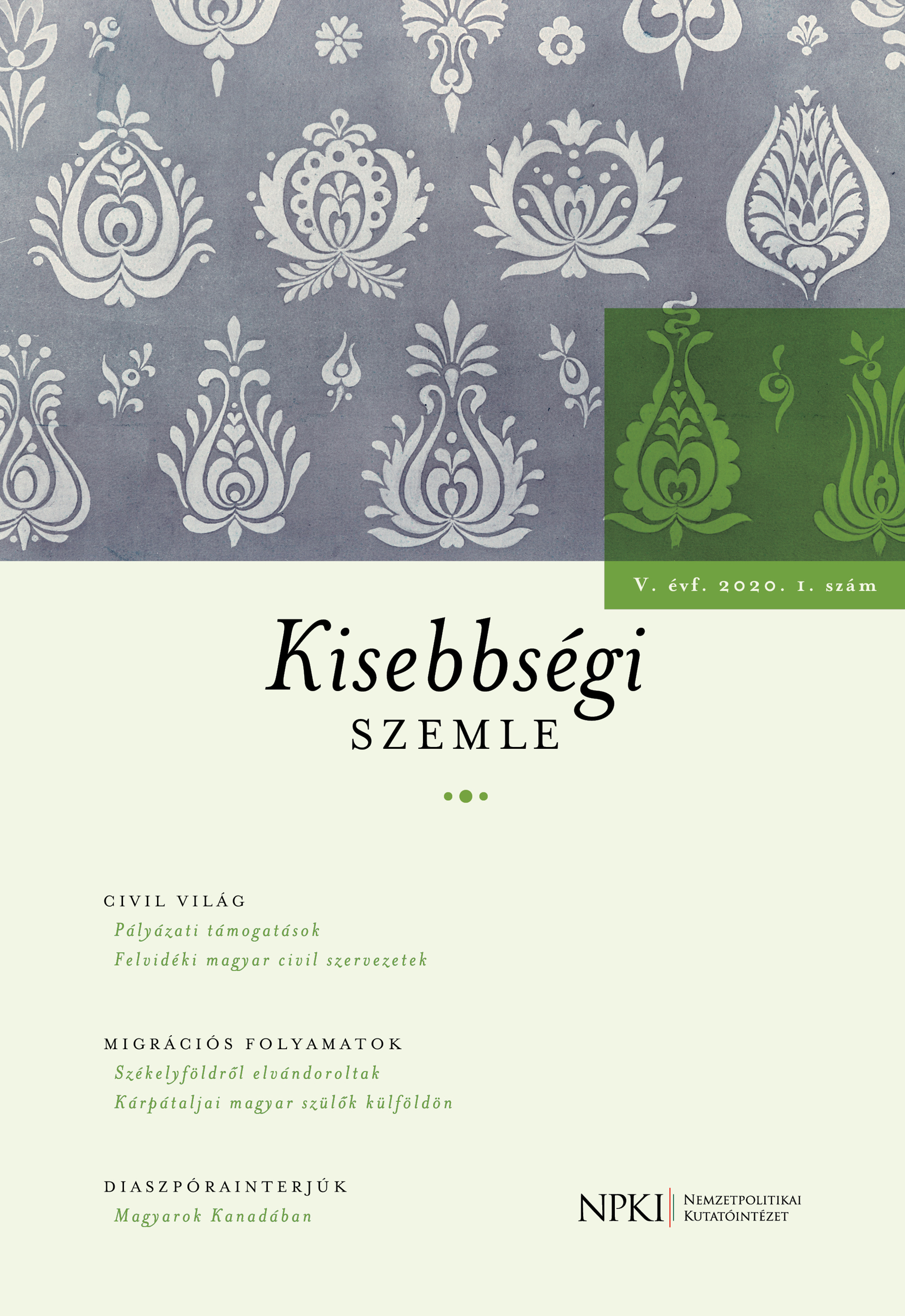
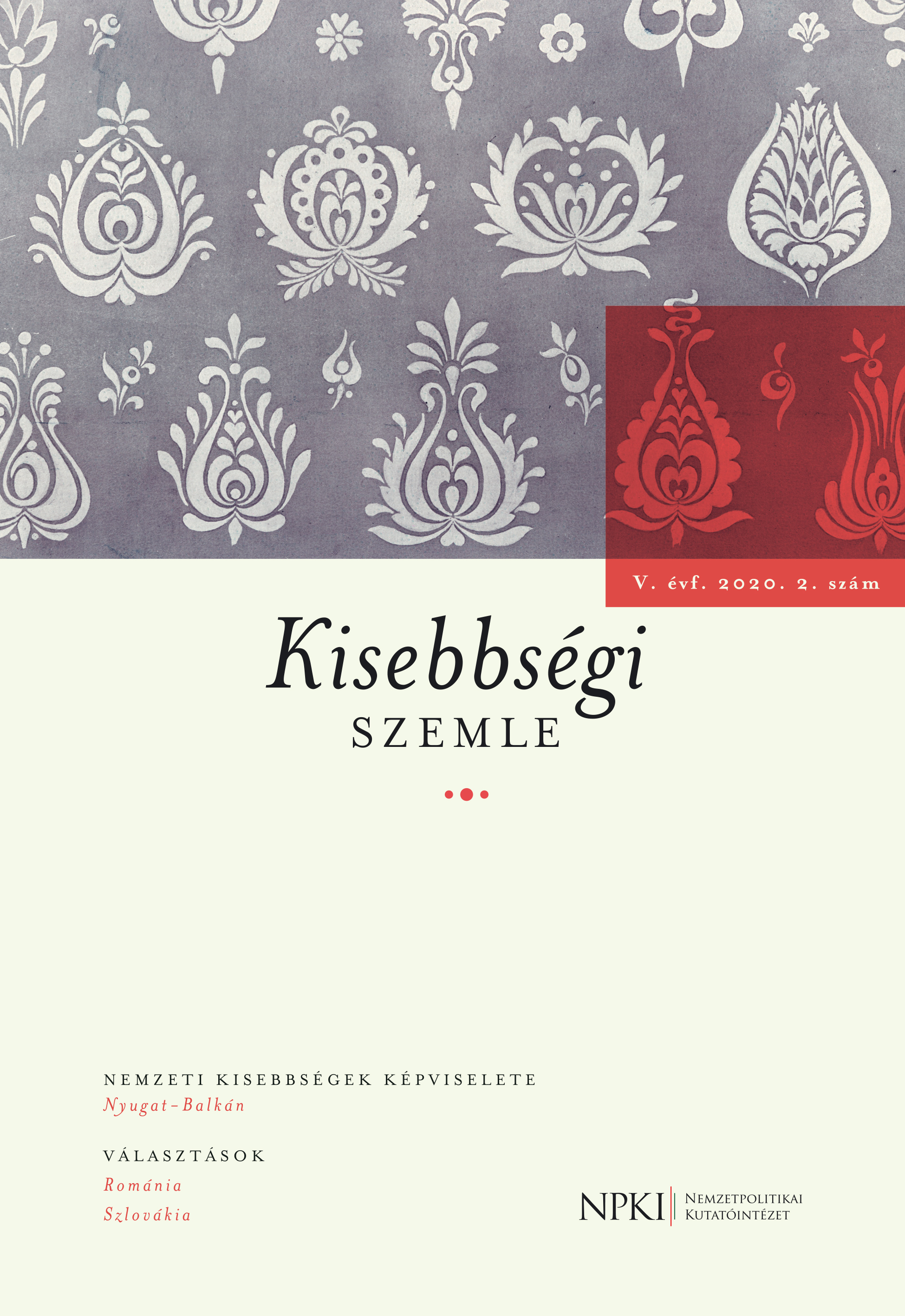
As of the 1990s not only Central and Eastern Europe, but also the countries of the Western Balkans were transformed from one party to multi-party democracies. Besides the political representation of the majority, the national minorities have also demonstrated political ambition and have sought visibility. At the same time the rights of national minorities, their participation in political life – especially due to the tragic events in the Balkans – have gradually shifted to the centre of attention from a marginal position. Among alternative solutions there are various methods for separate parliamentary representation of national minorities. These solutions have been put into practice in many of the above mentioned states. The aim of this paper is to review these alternative solutions of the past 30 years and the difficulties they have faced. The objective has been to provide a comprehensive exposition of the evolution of parliamentary representation of national minorities in the Western Balkans.
More...
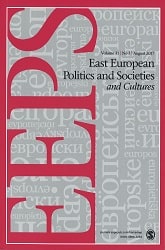
Of all four concepts that are enumerated unimaginatively in the title, and whose definitions have been passionately contested, Eastern Europe, for all the controversy over its identity, seems the easiest to define. It is, therefore, appropriate to begin by introducing the terms that are the basic objects of this paper. Because so many wars have been fought over nationalism and communism, both real ones and wars fought with words, it is necessary to inspect and display one's conceptual tools before beginning to use them; in a word, to state where one stands, in very broad terms, within the theoretical debate. [...]
More...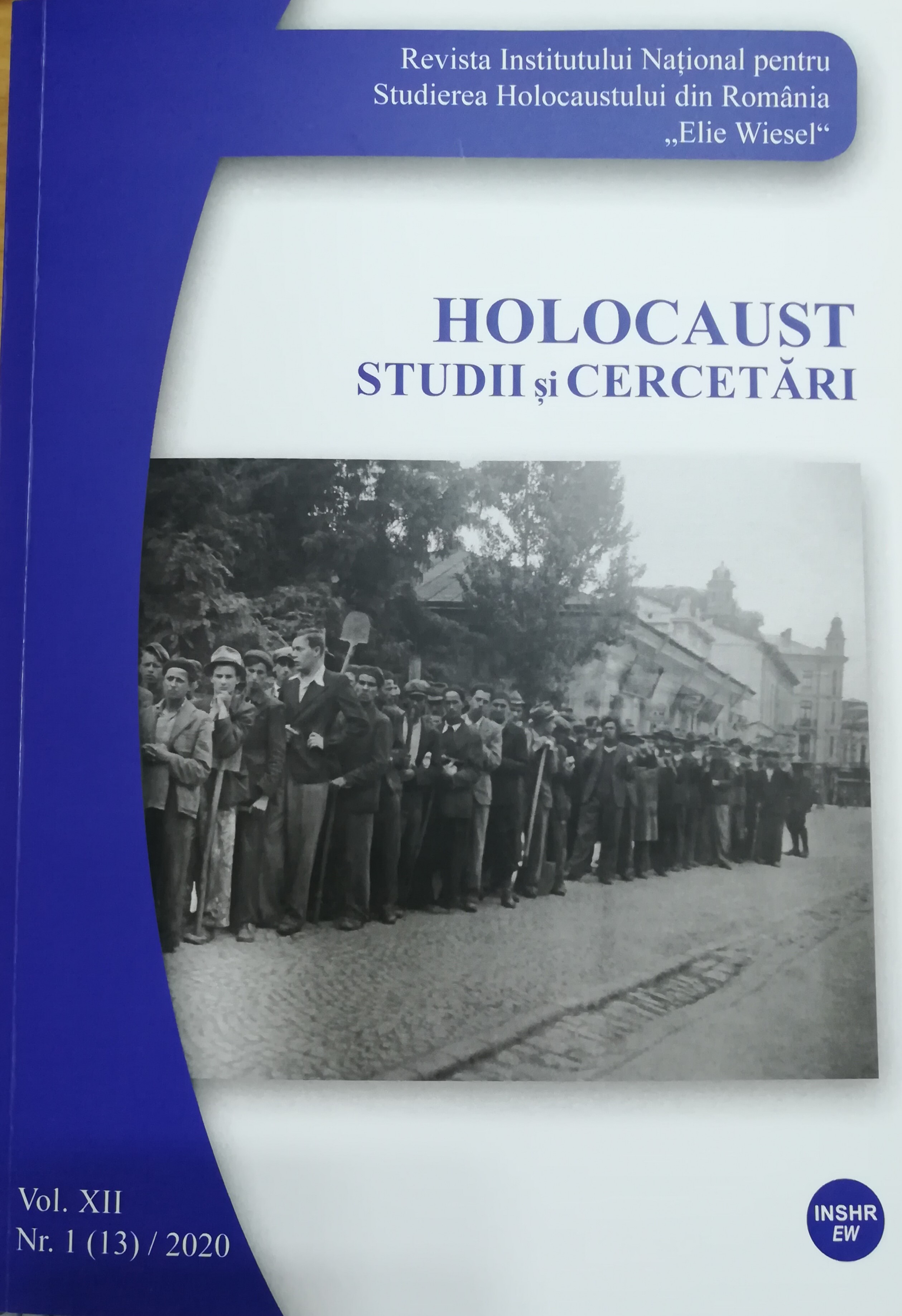
This paper turns toward the image ascribed to the Jewish minority by one of the most prolific representatives of Romanian culture, Nicolae Iorga. The analysis starts with the identity pattern proposed by Iorga and moves to the cluster of attributes that he ascribed to the Jewish minority, as well as the social roles associated to the latter. On a final approach, our interest moves towards the political solutions envisaged by Iorga to solve the “Jewish problem”.
More...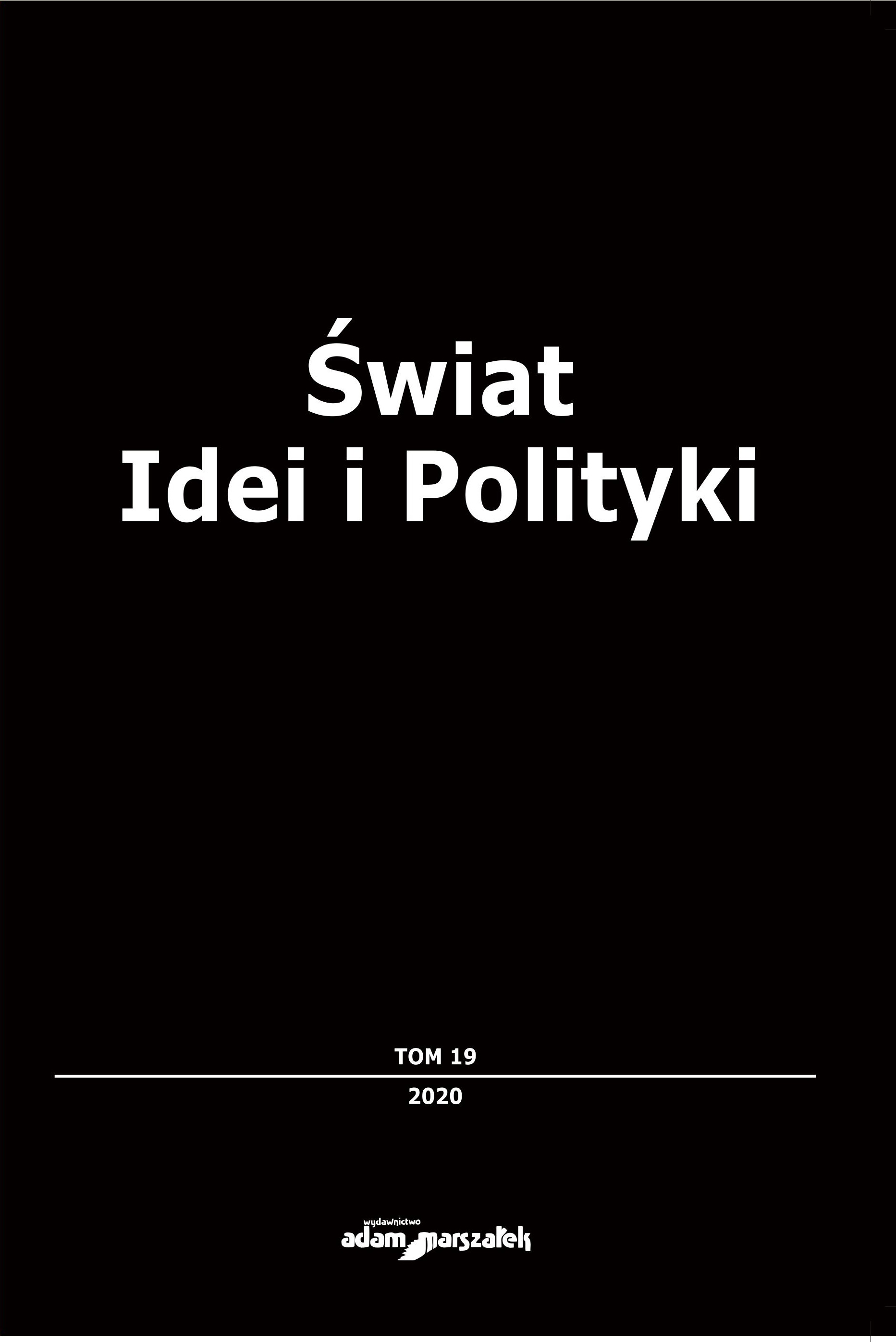
In this paper an author state a hypothesis that political extremism in New Zealand is a permanent phenomena that is present in New Zealand, which derives itself from globalization processes and evolves as the effect of idea’s diffusion. System theory is used as a theoretical perspective and a priori assumption that political extremism deepen state-phobia is made. Research methods such as lexical analysis and comparative analysis are used. During the research main extremist political trends are reveal, such as leftist, rightist, pro-ecological, islamic and postcolonial, and „lone-wolf” extremism. These phenomenon are highlighted in the perspective of potential security threats to the state. Ideological sources of extreme attitudes are revealed and shown in the most current political trends.
More...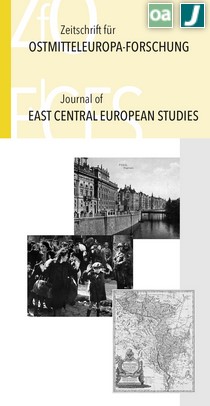
Review of: Bernard Linek - Katharina Schuchardt: Zwischen Berufsfeld und Identitätsangebot. Zum Selbstverständnis der deutschen Minderheit im heutigen Opole/Oppeln. (Kieler Studien zur Volkskunde und Kulturgeschichte, Bd. 13.) Waxmann. Münster – New York 2018. 364 S., Ill. ISBN 978-3-8309-3901-6. (€ 34,90.)
More...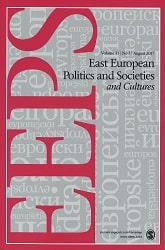
The series of articles that follows confront a fundamental question of socio-political development-the nature of social allegiances, and the two main classification systems that have been proposed to explain them-class and nation. All of the articles revolve around issues raised by Roman Szporluk in his book Communism and Nationalism: Karl Marx versus Friedrich List, published by the Oxford University Press in the spring of 1988. Readers who would like to enter fully into the themes of the articles may wish to read Szporluk's book first, but this is not a prerequisite, since the issues raised are of such far-reaching importance in the debate over the relationship between social and political explanations, not to mention the theory of nationalism, that each article stands on its own as a commentary on these issues. [...]
More...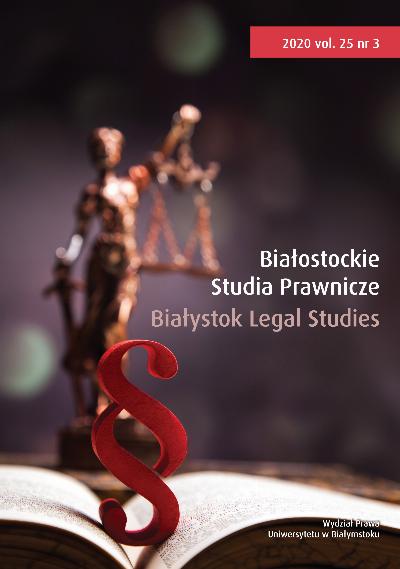
The article takes stock of the historical development of the notion of the right of a people to self-determination in international law. It provides a coherent review of the main international treaties, customary rules, and legal rulings that shaped the evolution of the term over the course of the twentieth century. In doing so, it focuses on the main historical and political events, which had an impact on that process as well as the preconditions that have to be met in order for a people to have the legal capacity to execute the right to self-determination. Three main processes, which it focuses on are: decolonization, the establishment of a number of new countries following the dissolution of the Soviet Union, and the recent developments following ICJ’s Advisory Opinion on Accordance with International Law of the Unilateral Declaration of Independence in Respect of Kosovo. It also delineates the subject of the legal definition of a “people” as opposed to a “minority”, describes the legal tension between the right to self-determination and the principle of territorial continuity in international law, and discusses potential further development of the term.
More...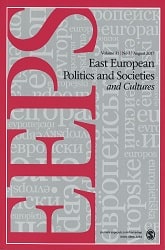
The mere suggestion of a category "East European nationalism" may appear artificial. This is especially true if, as in the present consideration, the category embraces all of what is commonly termed "East Central Europe" and the Balkans, plus the European portions of the Soviet Union. Unquestionably there are pragmatic reasons for considering simultaneously the strength of nationalist forces throughout the bloc dominated by Moscow, and even within polities (Yugoslavia and Albania) which were once but are no longer part of this bloc. [...]
More...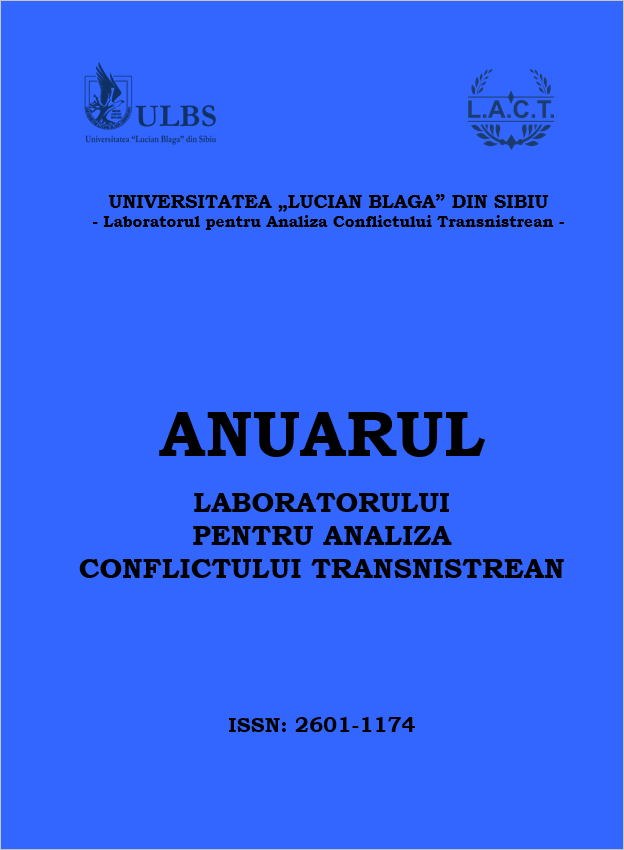
The study addresses the ethnic identity of the Republic of Moldova in the light of the Transnistrian conflict. The primary sources used are part of the collection of local newspapers on both banks of the Nistru River in order to indicate more clearly the vision and propaganda methods used by both blocks.The study aims at clarifying the role played by the ethnic identify in this conflict and the changes this identity gone through during this event. In addition, the main strategic movements addressed by both blocks and the results that have occurred after the conflict ended are also up for discussion.
More...
In the self-proclaimed Pridnestroviаn Moldavian Republic takes place the thorough regulation of the name of the republic in different languages: in Russian – "Приднестровская Молдавская Республика"(short form «Приднестровье»), in Moldovan (with Cyrillic spelling) – "Република Молдовеняскэ Нистрянэ" (short form "Нистрения"), in Ukrainian - "Придністровська Молдавська Республіка" (short form "Придністров'є"), in English "Pridnestrovskaia Moldavskaia Respublica", "Pridnestrovie", "Pridnestroviаn Moldavian Republic", they are also allowed choronyms "Pridnestrovien Moldavian Republic", "Transdniestrian Moldavian Republic", "Transdniestria". However, in parallel with officially established choronyms, other choronyms areused. It is primarily about the choronym "Transnistria".Thebenumerated choronyms not only express the translation / transliteration of the official name of the region, but represent an important part of the political symbolism of the self-proclaimed republic. Through the choronyms used, subjectivity is asserted in the formation of state identity and positioning in international relations. This topic is approached from the point of view of critical toponymy. The study showed that the conflict between Moldova and Pridnestrovie is also taking place in the toponymy area. The "toponymic struggle" fortheuse of certain choronyms pursues political objectives, as they reflect the interests of the parties to the conflict. In the Pridnestrovie weins is to the use of official choronyms, which affirm the self-proclamation of Pridnestrovie. In the Republic of Moldova, naming Pridnestrovie with choronym "Transnistria", the perception of the region as a continuity of the Transnistrian Government by the Kingdom of Romania (1941-1944) was expressed. But more of ten in the Republic of Moldova are used toponyms that require the perception of Pridnestrovie as a territory part of the Republic of Moldova.
More...